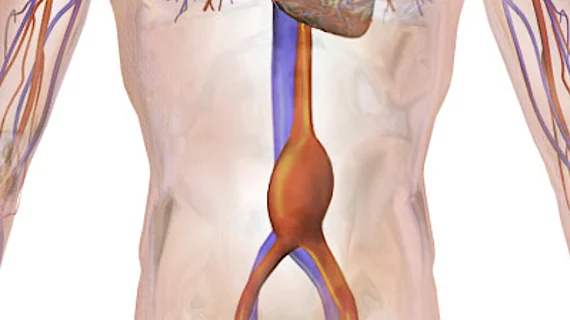Open AAA repair linked to better long-term outcomes than EVAR
Open abdominal aortic aneurysm (AAA) surgical repair is associated with a higher long-term survival rate than endovascular AAA repair (EVAR), according to a new analysis published in JAMA Network Open.[1]
The study’s authors noted that numerous research teams over the years have concluded that EVAR leads to superior peri-operative mortality and morbidity rates than open AAA repair. When focusing on long-term outcomes, however, comparisons have been “more controversial,” with multiple research teams finding that EVAR increased a patient’s long-term mortality risk.
Aiming to deliver “the most updated large-scale retrospective analysis” on this topic, the authors tracked data from nearly 33,000 patients undergoing a first-time elective EVAR or open AAA repair. The median patient age was 75 years old and 78.5% of patients were men. All procedures occurred from 2003 to 2018. No patients included in the analysis had a ruptured AAA or underwent concomitant procedures.
Overall, 86.3% of patients underwent EVAR and the remaining 13.7% underwent open AAA repair. The median ages were 75 years old among the EVAR group and 72 years old among the open AAA repair group.
The six-year mortality rates were 43.5% among EVAR patients and 34.9% among open AAA repair. EVAR was also linked to higher rupture (7.7% vs. 5.6%) and re-intervention (15.3% vs. 9.8%) rates after six years.
EVAR, meanwhile, was associated with a lower mortality rate after one year than open AAA repair (8.2% vs. 9%).
After propensity matching, the authors added, these trends mostly remained the same, though EVAR was no longer linked to a lower mortality rate after that first year.
Though this study was primarily focused on long-term outcomes, the authors did note that EVAR was associated with a lower 30-day mortality rate and fewer peri-operative complications.
“In this large-scale cohort study, overall mortality after elective AAA repair was higher with EVAR than open AAA repair over 6 years, despite reduced 30-day mortality and peri-operative morbidity after EVAR,” wrote lead author Kevin Yei, BS, of the UC San Diego School of Medicine, and colleagues. “After dividing the mortality analysis into finer time intervals, the mortality benefit associated with EVAR was lost after one to two years. EVAR additionally demonstrated significantly higher rates of six-year rupture and re-intervention. Although EVAR remains a highly valuable treatment modality, especially in patients who are not candidates for open surgery, open AAA repair should be carefully considered in patients who may be poor candidates for EVAR.”
Related EVAR Content:
FDA Roundup: AAA EVAR recommendations, key approvals in stroke care and interventional cardiology
Tracking sac regression after endovascular aneurysm repair for AAA
Reference:

